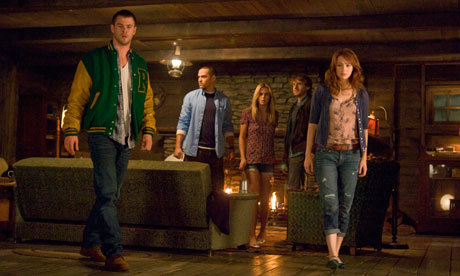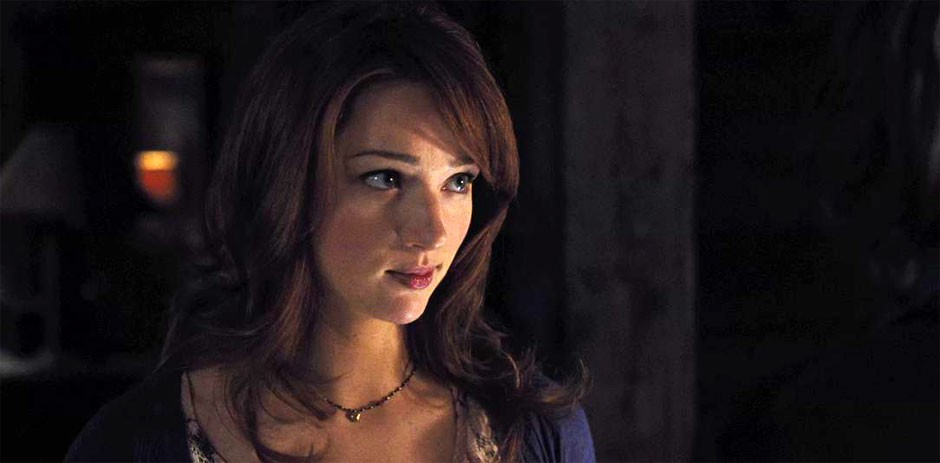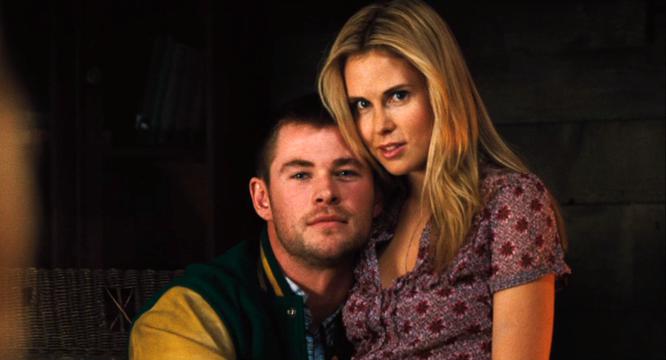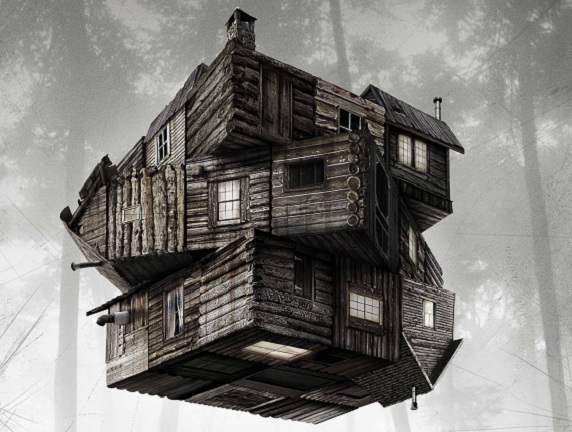 |
| The Cabin in the Woods |
A few months ago, the Joss Whedon-directed The Avengers was released, and there was much rejoicing. Fans seemed pleased. I saw it and enjoyed it, but I’m more obsessed with the OTHER Joss Whedon-directed film that came out this year. I loved The Cabin in the Woods and there are so many things I want to say about this movie, but for now I’m going to write about the interesting commentary on gender roles that was in the story.
WARNING: Spoilers ahead. Lots of them.
The Cabin in the Woods is more of commentary on horror films than a horror film in of itself, and the commentary comes to a head with the final scene, as the two survivors of the zombie attack confront the Director (played by Sigourney Weaver). She reveals that the five college students were selected to be killed as part of a ritual sacrifice to a group of ancient gods. Each student was meant to represent a different archetype: the Whore (Jules, played by Anna Hutchison), the Fool (Marty, played by Fran Kranz), the Athlete (Curt, played by Chris Hemsworth), the Scholar (Holden, played by Jesse Williams), and the Virgin (Dana, played by Kristen Connolly).
 |
| The five friends hear something in the basement. |
Fans and critics have argued over the significance of the ancient gods and what they’re supposed to represent. I think the ancient gods are a metaphor for humanity’s deepest, darkest desires – the ugly side of human beings. This is why the final two survivors sit back and let the world end, instead of Dana killing Marty or Marty killing himself. As they say, if sacrificing people is the key to humanity’s survival, then maybe humanity doesn’t deserve to be saved. (I also think Joss really, really wanted to write at least one story where the world actually ends – there are only so many times that Buffy, Angel, Mal, or Echo can prevent the apocalypse before the writer gets bored.)
With that interpretation in mind, I started thinking about the five college students in The Cabin in the Woods and how their roles are defined by gender. The two women, Jules and Dana, are defined as The Whore and The Virgin – two opposite ends of the spectrum whose deaths are meant to serve as bookends for the others. The order of deaths is irrelevant except in the case of the women. Jules, as the corrupted Whore, has to die first, and Dana, the Virgin, has to die last, if she dies at all. As Hadley (Bradley Whitford) says, “The virgin death is optional as long as it’s last.” The female characters are defined only by their sexuality – nothing else about them really matters.
 |
| Dana (Kristen Connolly) will be very surprised to learn that she’s a virgin. |
Still, the men don’t fare much better. Their prescribed roles are not based on how much sex they have and don’t have, but shoving them into the roles of The Athlete, The Scholar, and The Fool doesn’t give them much room to breathe, either. If you’re a woman, you can be the virgin or the whore. If you’re a man, you can be athletic or smart or funny. Complexity is not allowed.
What I find particularly interesting, though, is how the “puppeteers” (as Marty calls them) recognize that the five people they’ve selected for the sacrificed don’t easily fit into the prescribed archetypes.
Of the five, Holden is the closest to resembling his actual archetype. He’s able to calculate the distance in the gorge that Curt tries to jump on the motorcycle, and, well, he’s fairly quiet and wears glasses. He’s also ridiculously good-looking, which isn’t typical for the Scholar archetype, but other than that, he fits the role pretty well.
 |
| The athletic scholar (Jesse L. Williams) and the smart fool (Fran Kranz) |
The same cannot be said for Curt and Jules. As Marty points out, “He’s a sociology major! When did he start pulling this alpha male bullshit?” The little we saw of Curt before the puppeteers started altering his personality was of a pretty intelligent young man who was nice to his friends. Similarly, Jules, a pre-med student, is a seemingly good friend who makes jokes with her boyfriend about anti-drug PSAs. But that won’t do – the puppeteers have to inject drugs into the air to make Curt more aggressive and alpha male, and they put cognition-lowering drugs in Jules’ hair dye to turn her into a dumb, overtly sexual blonde.
(On a side note, one of my favorite things about this movie is the moment where Jules comes onto Marty, calling him her old sweetheart, where he clarifies that they only made out one time. I completely expected a scene where Marty revealed his resentment towards the dumb whore who broke his heart and left him for the hot jock. Instead, Marty worried that this behavior was out of character for his good friends and seemed concerned for them. I really appreciated that Marty primarily saw Jules and Curt as his friends, and that once kissing Jules was such a non-issue for him.)
 |
| Curt (Chris Hemsworth) and Jules (Anna Hutchison) in happier times |
Then there’s Dana, the so-called virgin – even though she slept with one of her professors, a fact that is mentioned in her first scene of the film. Dana’s behavior would probably be considered more “whorish” than Jules’s, as Dana is sleeping with a teacher and Jules is having sex within a monogamous relationship. But that doesn’t matter. Dana is still the virgin and Jules still the whore, because Dana is more quiet and subdued than Jules is, and American society thinks of virgins as quiet and subdued and sweet, and whores as brash and loud and more outgoing.
Finally, we have Marty, the Fool who is the first to understand that he and his friends are the victims of a conspiracy. In addition to being the most entertaining character of the five college students – because Fran Kranz is fantastic, even if he is playing a less creepy, more stoned version of Topher Brink in Dollhouse – he’s also the least subversive. Anyone exposed to a small amount of classical literature won’t be surprised to see the Fool as the smartest character of the group, which makes me feel like the puppeteers in The Cabin in the Woods all failed their English classes in high school. Still, he’s the one who throws the wrench in the plans to save the world by sacrificing a group of humans.
None of this analysis is new, but I brought it up because I want to return to my original point of the ancient gods representing our deepest, darkest desires. The ancient gods represent the ugliest traits of humanity – not only the lust for blood, but the need to categorize people into certain roles and to keep them there. We need to see men defined by one character trait and women defined by their sexual choices, and if these particular men and women don’t fit into the roles as we’ve prescribed them, we’ll make them fit. We’ll alter their personalities so they can easily fit into the Whore, the Scholar, the Athlete, the Fool, and the Virgin. And as we can see from the other countries’ failed attempt to appease the gods – including the Japanese tradition of unleashing one monster on a group of elementary school girls – this need to categorize into the Whore/Scholar/Athlete/Fool/Virgin is a uniquely American desire. The desires created by nature and nurture clash together in an ugly mix where we want to see these people killed one by one in a prescribed order.
Yeah, I really loved this movie.
 |
| The white board of monsters behind Richard Jenkins distinguishes between “witches” and “sexy witches.” |
Lady T is a writer with two novels, a play, and a collection of comedy sketches in progress. She hopes to one day be published and finish one of her projects (not in that order). You can find more of her writing at www.theresabasile.com.
